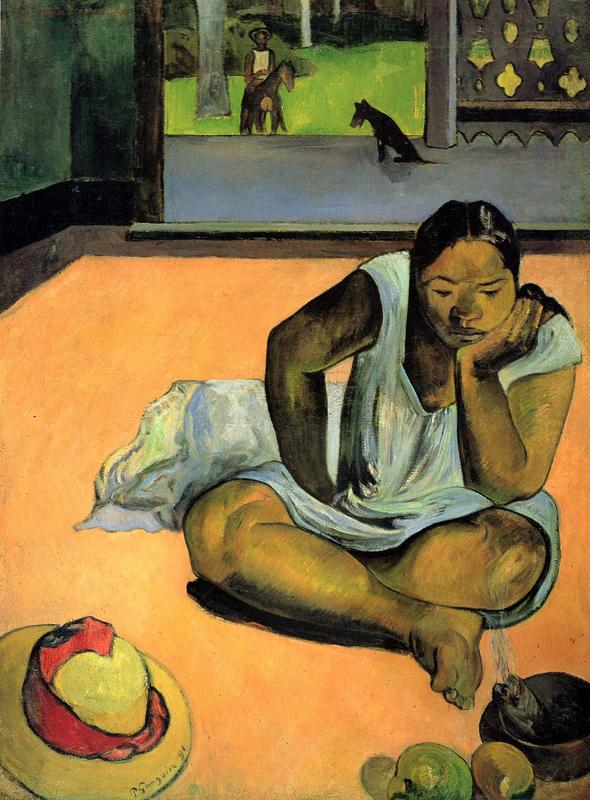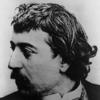More about The Brooding Woman

Contributor
Gauguin considered The Brooding Woman to be one of his best, and artist Edgar Degas agreed, eventually acquiring the painting.
The piece, like so many of Gauguin’s, centers around his trips to Tahiti and the Tahitian people - i.e., Two Nudes on a Tahitian Beach, Where do we come from? What are we? Where are we going?, and The Spirit of the Dead Watching to name a few.
The painting remains a highly sought after one, so much so that in May of 1972 there was a successful robbery of the painting by two men in ski masks who shot the museum security guard in the hip as they fled the scene with four expensive paintings tossed into trash bags. They’d successfully robbed a bank the week before, then in the museum robbery they stole Mother and Child by Picasso, Portrait of Saint Bartholomew by Rembrandt, and another piece by Gauguin, Head of a Woman. Safe to say they were on track to have more money than they would ever need. Luckily, the security guard survived, the men were caught a couple weeks later, and the paintings were recovered later that year.
To the excitement of many Americans, the piece was actually the first Gauguin to enter the United States in 1921. In classic American fashion, the Tahitian title Te Faaturuma was initially mistranslated as The Sulking Woman before it was later corrected.
The subject of the painting is an unidentified Tahitian woman, who it’s speculated is Gauguin’s thirteen-year-old mistress. Gauguin is deservedly criticized for his personal life and his offensive depictions of naked Tahitian women who are stereotyped racially and sexually. It’s worth noting that his work also told stories of Tahiti as a damaged paradise and one that was suffering at the hands of Europe - disease and Christianity were wiping out Tahiti and its culture. His paintings, like this one, often depicted Tahiti as a real place, full of loss and mourning, instead of just a brightly colored paradise.
Sources
- MILTON ESTEROWSpecial to The New,York Times. 1968. "Worcester Museum Corrects as it Catalogues." New York Times (1923-Current File), Apr 04, 54. https://login.libproxy.newschool.edu/login?url=https://search-proquest-…
- Temin, Christine. "THE BEST MUSEUM IN NEW ENGLAND WHAT IF YOU TOOK SOME OF THE GREATEST ART IN NEW ENGLAND AND PLACED IT ALL IN ONE ROOM?" Boston Globe (pre-1997 Fulltext) Aug 07 1994: 12. ProQuest. 31 Dec. 2018 .
- "The Brooding Woman." Early American Paintings. Accessed December 31, 2018. https://www.worcesterart.org/collection/European/1921.186.html.
- Williamson, Chet. "Art Not Imitating Life." Worcester Magazine Dec 2007: 6,7,9. ProQuest. 31 Dec. 2018.
- Wright, Alastair. 2010. "Paradise Lost." Artforum International, 09, 174-174,176. https://login.libproxy.newschool.edu/login?url=https://search-proquest-….











